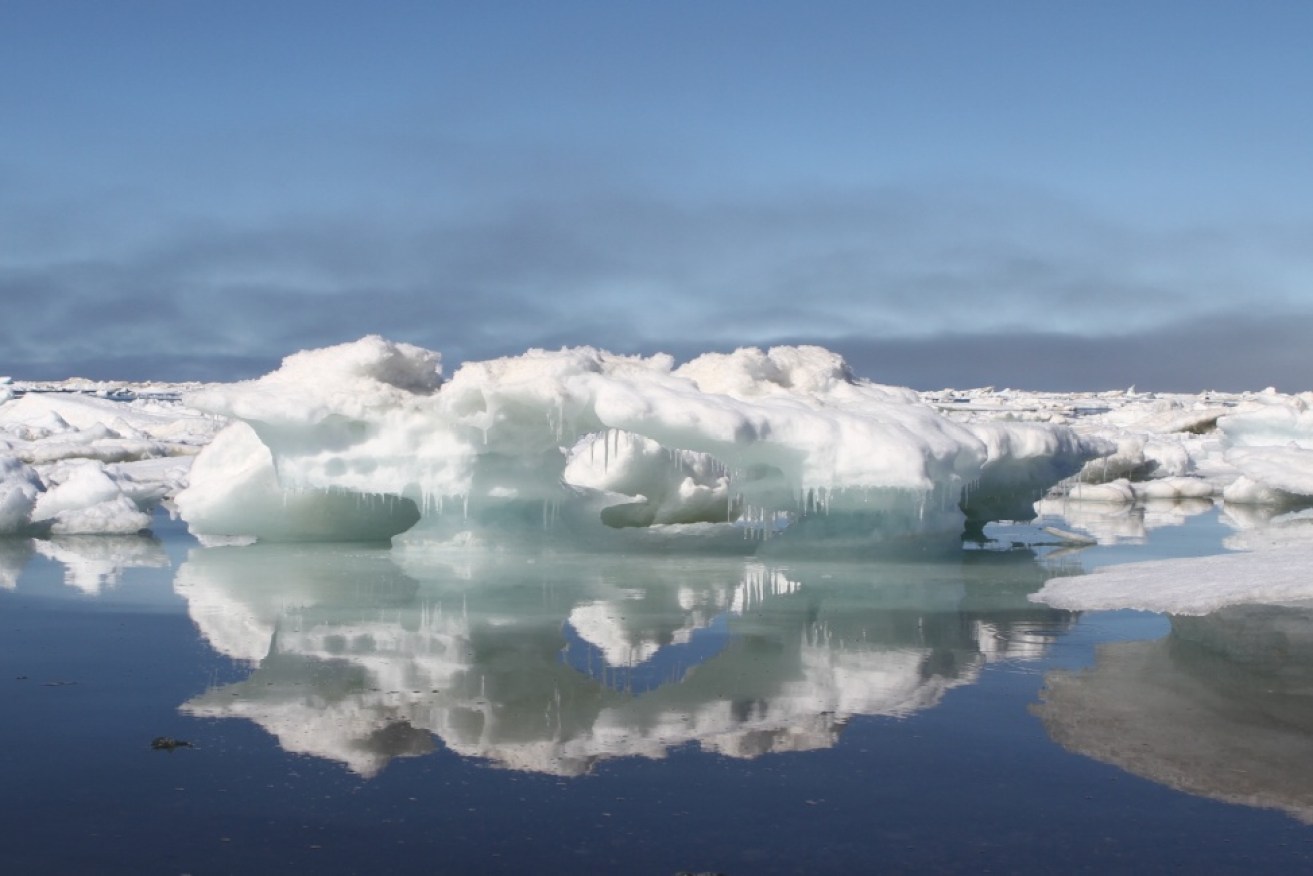NASA graphic shows us just how our Arctic ice cap is shrinking


The world's arctic sea ice mass is shrinking, and NASA has the graphic to prove it. Photo: NASA
If you’ve ever wondered what global warming looks like, a new animation from NASA offers an eye-catching illustration of the effects of the climate change phenomenon.
The graphic shows the movement of Arctic sea ice, the large mass of frozen water on the Arctic Ocean, in a time-lapse spanning three decades.
As Arctic sea ice shrinks and as it loses mass, it becomes more at risk from warming waters and the atmosphere.
“What we’ve seen over the years is that the older ice is disappearing,” said Walt Meier, sea ice researcher at NASA’s Goddard Space Flight Centre.
“This older, thicker ice is like the bulwark of sea ice: a warm summer will melt all the young, thin ice away but it can’t completely get rid of the older ice,” Mr Meier said. “But this older ice is becoming weaker because there’s less of it and the remaining old ice is more broken up and thinner, so that bulwark is not as good as it used to be.”
Watch the time-lapse graphic:
Younger sea ice, or first-year ice, is shown in a dark shade of blue while the ice that is four years old or older is shown as white.
The graphic was created by NASA’s Scientific Visualisation Studio to offer an impression of how much the Arctic sea ice has reduced since 1984.
NASA says that in September 1984 there was 1.8 million square kilometres of ice that was at least five years old at its lowest annual amount. By September 2016, there was just 110,000 square kilometres left.
The time-lapse animation also shows how the mass of ice moves around throughout the seasons and years. While the surface area of the sea ice has been shrinking, the older ice is also being reduced, making the entire ice block less sturdy due to the younger ice’s thinness.
In the video, the younger ice is shown a darker shade, while the older ice is white.
“Ice age is a good analog for ice thickness because basically, as ice gets older it gets thicker,” Mr Meier said. “This is due to the ice generally growing more in the winter than it melts in the summer.”
Scientists at the University of Colorado devised a method of monitoring Arctic sea ice movement and age by using satellite passive microwave instruments, weather and data from buoys.
What about the polar bears?
A University of Washington study released in September found that polar bears are among the animals most affected by the seasonal and year-to-year decline in Arctic sea because they rely on sea ice for essential activities such as hunting, traveling and breeding.
The study, funded by NASA and using satellite data from NASA and other agencies, found a trend toward earlier sea ice melt in the spring and later ice growth in the autumn across all 19 polar bear subpopulations, “which can negatively impact the feeding and breeding capabilities of the bears”.
Nineteen separate polar bear subpopulations live throughout the Arctic, spending their winters and springs roaming on sea ice and hunting.
The bears have evolved mainly to eat seals, which provide necessary fats and nutrients in the Arctic environment.

Polar bears rely on sea ice for hunting. Photo: Kristin Laidre/University of Washington
Polar bears can’t outswim their prey, so instead they perch on the ice as a platform and ambush seals at breathing holes or break through the ice to access their dens.
“Sea ice really is their platform for life,” said co-author Kristin Laidre, a researcher at the UW’s Polar Science Center. “They are capable of existing on land for part of the year, but the sea ice is where they obtain their main prey.”








